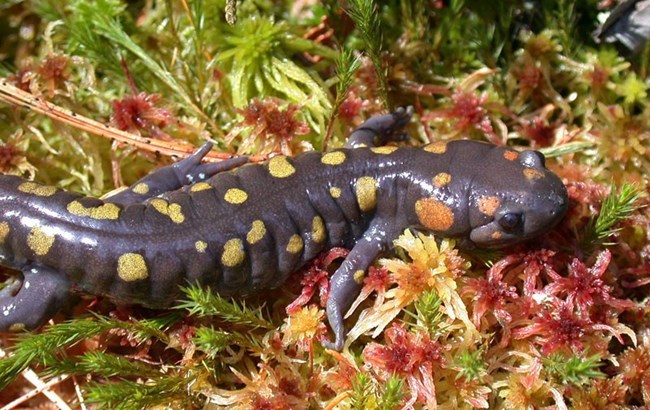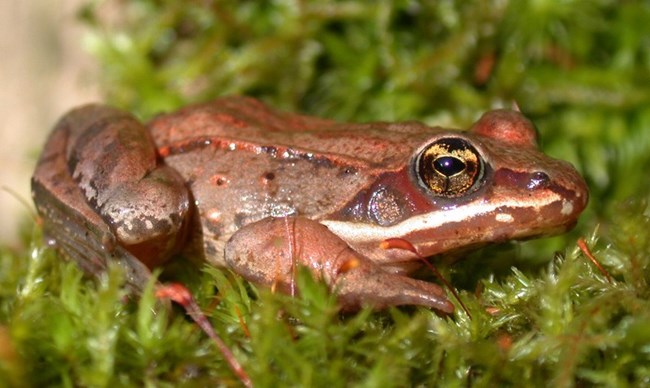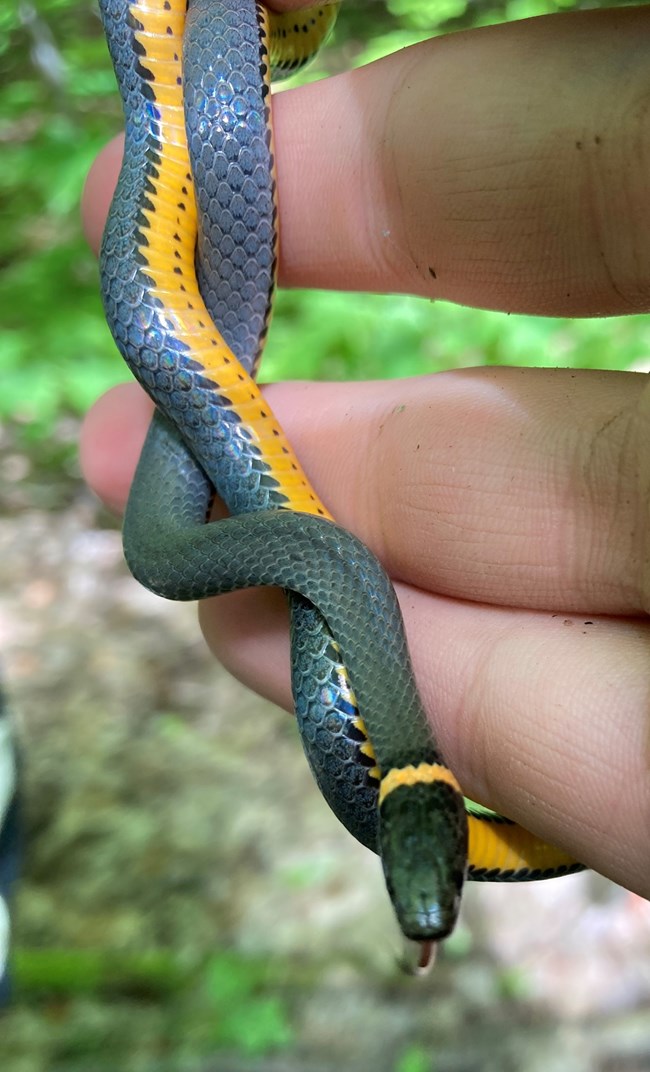
Photo/G. S. Casper Amphibians have high potential as indicators of changes in the environmental quality because of their biologic sensitivity and a life cycle that involves both aquatic and terrestrial habitats for many species. The Apostle Islands National Lakeshore is home to several species of amphibians. Their diversity is influenced by available habitat, island size, and colonization events. With the exclusion of Gull and Eagle, which are too small for suitable habitat, the islands support 6 species of salamanders, 8-10 species of frogs, 4 species of snakes, 2 species of turtles, and 1 toad. 
Photo/G. S. Casper The Wisconsin Department of Natural Resources (DNR) has been coordinating statewide frog and toad surveys since 1984. In cooperation with the DNR's monitoring program, the Lakeshore audio frog and toad surveys were begun in 1990 to determine long-term statewide population trends. As a protected area, Apostle Islands may also serve as a control against which population trends could be compared with intensely managed areas. Acoustic monitoring since 2014 tracks specific frogs on permanent and semipermanent wetlands* at 10 sites and helps show the health of the ecosystem by tracking species phenology, occupancy, and abundance. 
Photo/H. Hyzer
*Wetland habitats:MarshesLocation: shores of rivers, streams, ponds, lakes, and coastlines SwampsLocation: along rivers, streams, and lakes BogsLocation: northern climates, often in deep depressions with no drainage FensLocation: northern climates, usually in low-lying areas with some drainage Select a Park:Select a Species Category (optional):
Search results will be displayed here.
|
Last updated: September 30, 2021
